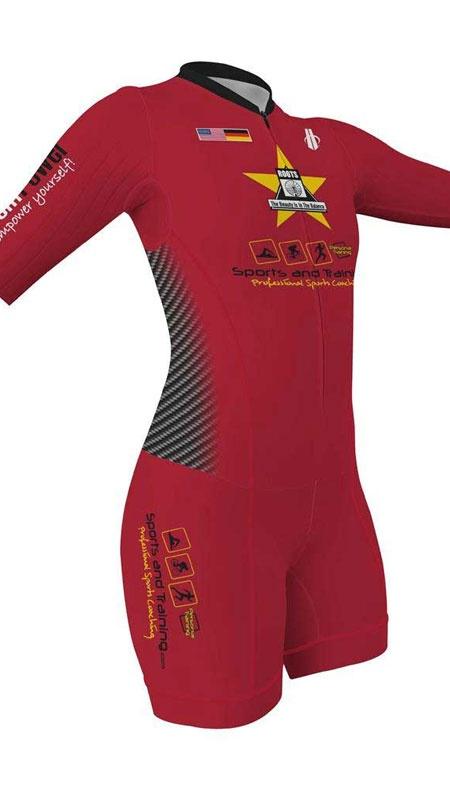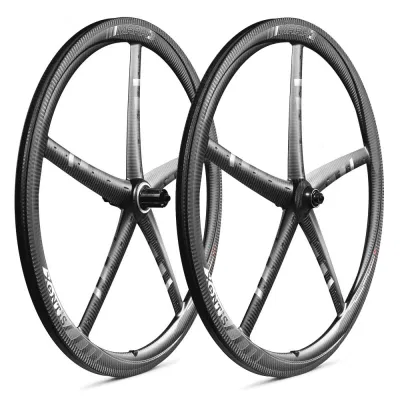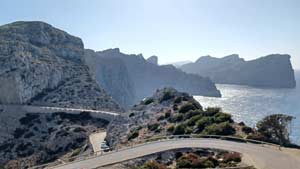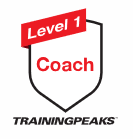Aerodynamics in triathlon
The Triathlon Ironman world record for the long distance is held by Jan Frodeno with a time of 7:35:39.
While in cycling you have to pay attention to aerodynamics because of the speed and the air resistance, this is not really the case in the other two disciplines in this way.
Not only can an aerodynamic bike help you increase your speed, What changes will give you the most advantage to further improve your aerodynamics in triathlon.
In the following article we give the some hints.
Why aerodynamics is important in triathlon
When something moves, it is subject to air resistance. This is a type of friction caused by air particles and its effects depend on factors such as the surface of the moving object, the speed, the smoothness of the surface and more.
In cycling, speed is critical to the bike split time. Several factors influence your speed. It is important to understand that the less air resistance you face, the faster you can move.
This is because the air causes less resistance and you can move through it more easily. For this reason, sports cars have a slim shape so that the air can flow over them more easily.
While training at slightly higher speeds you can often feel for yourself how to position your body to improve your aerodynamics, by simply changing the position of your seat you will notice for example on long descents if you get faster by reducing drag. What can you specifically do to reduce drag?
Technique and orientation:
Swimming in lakes or rivers requires good technique and the ability to orient yourself. Unlike swimming in a pool, open water swimming has no markers on the edge of the pool or on the ground. Train to look for natural landmarks such as trees, buildings, or mountains, and you will have an easier time in competition. In training, be sure to also practice swimming in different conditions such as waves, currents, and with visibility obstructions to better adjust.
By doing the following things you will reduce drag
There are many aspects of triathlon training to get faster and improve your performance. But what equipment will make you faster for the same amount of power. High quality equipment is designed to improve you aerodynamically and your overall speed will increase as a result.
Skinsuit Triathlonanzug
Until a few years ago, an aerodynamic helmet was the best and cheapest way to effectively improve your aerodynamics, but the development of time trial and triathlon suits has made great strides in recent years and thus the triathlete's suit lands at number one in our list.
Meanwhile, in triathlon, especially the Ironman, the so-called skinsuit have become established. The body has a large surface area, so another part of the air resistance comes from there. Skinsuits are streamlined and "smooth," which helps reduce drag on the body.
The right size suit is very important. You need a skinsuit that is large enough to fit straight in, but otherwise fits quite snugly. A suit that is too large would create additional unnecessary drag.
The Ryzon Frodissimo triathlon skinsuit is a good example of an optimized fit.
Our team suit is also aerodynamically optimized for the requirements of triathlon and meets all the required properties to save some watts (optimally up to 15 watts) through the clever use of material.
The aero helmet
Your head is bigger than you might think, and its position directly in the wind plays a crucial role in aerodynamics. You need a helmet that allows air to flow easily over your head, while improving flow over your shoulders and back and still keeping your head cool.
Traditional bike helmets are great for protection, because that's the main purpose. However, to improve aerodynamics, you need something more specialized.
Here, the market offers a variety of options. Rudy Project makes some excellent aero helmets. The Wing, for example, is the product of research and development. It has a full visor so you don't have to deal with the wind in your face, and a short tail that keeps the surface area small.
Front wheel - High flank and few spokes
The wheels also play a crucial role in the aerodynamics of triathlon bikes. At the same time, the actual round and narrow wheel as such must be stable and torsionally stiff, but also light.
Vision and Xentis are here just two of the many wheels on the market, which offer something for every budget and need in this area. The Metron 3 Spoke Front Disc from Visions or the Xentis Mark 3 are my personal favorites here. All manufacturers of the most aerodynamic bikes on the market today, offer a wide range of brake and tire options to be matched with your bike.
Vision produces bike parts specifically for triathlon, improving aerodynamics is a stated main goal. In general, high-profile rims with a low spoke count, or so-called tri- or fourspokes, are the most aerodynamic choice. In racing, however, criteria such as weight, (side) wind susceptibility or durability decide on the individual selection of the wheels, each athlete.
Rear wheel - disc wheel or not :-)
Not quite as decisive as the front wheel, but also with a decisive part is the option of the rear wheel. Who can not decide for a disc wheel, also has here the choice of many manufacturers. Zipp, Xentis, Vision. Disc wheels are approved according to the regulations and offer excellent aerodynamics. On the other hand, they are somewhat heavier and considerably more susceptible to wind.
Construction of aerodynamic wheels
As a rule, the wheels are made of a unidirectional carbon fiber construction, both in the fairing (the rim flank), as well as the actual rim provided, this ensures a low weight and allows for long-lasting driving pleasure.
Often these wheels are equipped with ceramic bearings to reduce mechanical losses due to friction to a minimum and save more watts here. While speed is at the forefront of the fight for every place, nowadays you can also brake very easily thanks to the reinforced, machined braking surface. Problems with deceleration occur with some manufacturers when using a rim brake in wet conditions, here it is necessary to find the optimal combination of brake rubber and rim.
Adjustment of the bodyThe riding position is one of the most important factors for triathletes to reduce drag. Unfortunately, an individually optimal position is not so easy to find and depends on many factors.
Your body position needs to be as aerodynamic as possible, but you still need to feel comfortable as an athlete, be at one with your equipment, and be able to pedal effectively so that you can maintain the riding position for an extended period of time and not lose watts. The time trial/triathlon position you find this way will feel unnatural at first, but with time and more training it will become much easier and more natural. |
Where can you get more time out?
Many other pieces of equipment / material and details affect your aerodynamics. These include water bottles, frames, shoes, aerodynamic overshoes, chainring covers and much more.
All parts that are streamed affect aerodynamics. How far you want to push your optimization is up to you, and probably depends on whether you're competing in an Ironman or shorter triathlon events.
The detailed time gains through improved aerodynamics in a table?
Basically, this table should serve as an orientation, because the decisive factor for the actual improvement is your starting material. In every race there will be different variables (course profile, wind, weather) that influence the actual time gain in your triathlon.
Our baseline is a 40km time trial (assuming the rider weighs 75kg, wears an 8.1kg bike and normal cycling clothes - 250 watts for 40km at a speed of 43.5km/h or 27mph):
| Material | Time gain | Power gain | Price |
Aerodynamic suit | 134 sec. | 23 Watt | 300 - 700 Euro |
Improved aeroposition | 56-112 sec. | 10 -21 Watt | Aeroaufsatz 700 Euro Analyse 400 Euro |
12-Spoke front wheel with deep rim and | 71 sec. | 14 Watt | 800 – 5000 Euro |
Time trial helmet | 67 sec. | 11,5 Watt | 200 Euro |
Shaved legs | 50+ sec. | 10 Watt | 15 min |
Road aero helmet | 21 sec. | 3,5 Watt | 150 Euro |
3-spoke wheel (rear wheel) | 29 sec. | 5 Watt | 800 - 5000 Euro |
Time trial frame | 17 sec. | 3 Watt | 3000 – 10000 Euro |
Aero bottle or bottle in the aerobar | 30 sec. | 5-7 Watt | 30 Euro |
tightly routed brake and shift cables | 10 Watt | 100 Euro |
In practice, you'll probably see different results, but this shows how much difference these improvements can make.
Source: https://www.roadbikerider.com/cycling-aerodynamics-time-savings/
I would like to mention the following figure. An improvement of 1 minute on 40km (with a speed of 40 km/h) is achieved by a saving of about 10 watts.
With this knowledge you can now think about how many watts you can save in order to finish with the same performance at your Ironman or a shorter challenge maybe one place further ahead.
Training with an aerodynamic bike or competition material
Even with a well-built aerodynamic bike and the right equipment you have to train. We recommend our athletes to do all non-basic sessions on the time trial bike at least in the last 12 weeks before the race to get the body used to the riding position and the conditions.
If you want to improve even more, our coaching is the best way to do it.
Sports and Training offers training, coaching programs, tips and more to help you prepare for your triathlon. Take a look at some of our training plans to see what we have available.
Triathlon Coaching - individual and highly effective! |
Related articles:





















